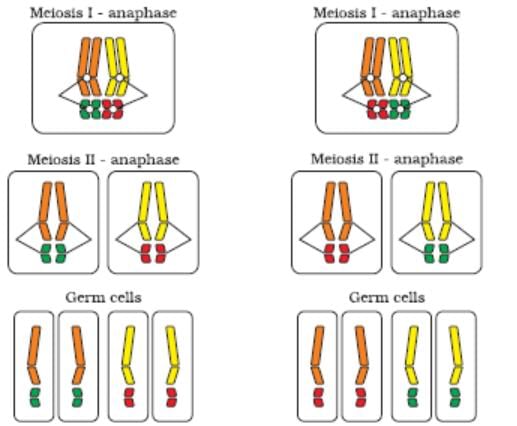Test: Chromosomal Theory of Inheritance - Grade 12 MCQ
15 Questions MCQ Test - Test: Chromosomal Theory of Inheritance
Among human males, _______ chromosome is present but its counterpart is _____ and called ______ chromosome.
Assertion (A): In pea plants, yellow seed color (Y) is dominant over green seed color (y).
Reason (R): Yellow-seeded plants can only be produced by the YY or Yy genotypes.
Which of the following statements accurately describes the Mendelian principles of inheritance?
What was the contribution of Theodore Boveri and Walter Sutton to Mendel’s work?
The figure below shows the chromosome segregation during germ cell formation with four stages labeled as (A), (B), (C), and (D). Select the right option giving all the four stages correctly identified:
Morgan worked with the fruit fly Drosophila melanogaster, which is ideal for genetic studies due to several factors. Which of the following statements are incorrect regarding Drosophila as a model organism?
What were the colored bodies observed in the nucleus during the process of division called?
Which of the following best describes the process illustrated in Figure ?

Which of the following scientists was not responsible for the rediscovery of Mendel’s work?
One of the significant drawbacks of Mendel’s work was _________



















